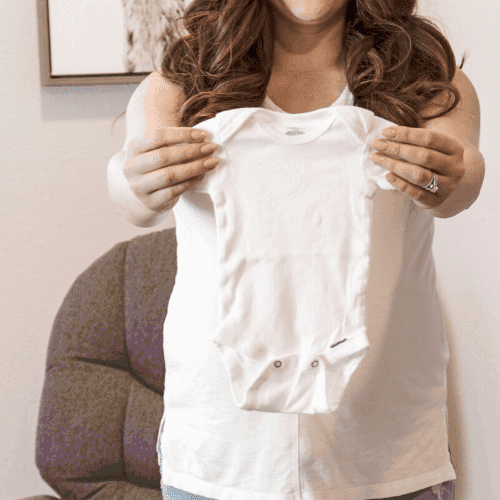If you are reading this article, you are either fed up with being pregnant, your due date has come and gone, you are trying to get the baby out before a hospital induction, or it could be all three!
Here is everything you need to know about how to induce labor naturally.
This article includes some home remedies to induce labor, things to kickstart labor and ways to induce labor on your own
Ways to induce Labor
Full-term can mean anything up to 42 weeks and only 2-5% of babies are born on their estimated due date and a whopping 40% in the two weeks that follow.
Although getting labor going can sound enticing it is not recommended to try induction methods medical or natural until you have reached full term.
There is light at the end of the tunnel that you won’t be pregnant forever and that your body and baby will do what they are meant to.
If you still feel like you would like to try to get your labor started quickly, below are some ways to induce labor naturally
None of the methods below have evidence behind them or a 100% success rate, saying that one could argue that even medical inductions can and do fail.
[adthrive-in-post-video-player video-id=”zUblisnn” upload-date=”2020-02-05T00:00:00.000Z” name=”NATURAL WAYS TO INDUCE LABOR” description=”The best ways to induce labor naturally at home. Top tips on how you can induce labor at home and avoid a medical induction. Use these methods and get that baby out!” player-type=”collapse” override-embed=”false”]
As an Amazon Associate I earn from qualifying purchases. The links below may be affiliate links. Please read my disclosure policy for more information.
How much fresh Pineapple to induce labor?
Using Pineapple to induce labor is pretty non-invasive, and if it doesn’t work to get you labor started at least you would have got some great health benefits from eating this delicious fruit!
The core of fresh pineapple contains a type of proteolytic enzyme called Bromelain which is commonly used as a meat tenderizer.
The theory is it helps to soften and ripen the tissues around the cervix and induce labor, working like a prostaglandin. You may be thinking how much pineapple would you need for it to be effective?
RELATED: The Hyperemesis Gravidarum diet that got me through my fifth pregnancy

Let’s just say it’s probably a lot more then you bargained for and a fruit salad will not cut it, it could be as much as 7-8 fresh pineapples including the most important bit: the core.
Unfortunately, there is no scientific evidence to prove that eating pineapple works in inducing labor.
There are however some side effects to consider before trying to eat excessive amounts of pineapple; these include diarrhea and heartburn due to the high vitamin C content of this exotic fruit.
Another common side effect is cut lips and tongue due to the enzyme acid, the high natural sugar in this fruit would also mean that it wouldn’t be suitable for those dealing with gestational diabetes.
RELATED: How To Prepare For A Labor Induction
Eggplant Parmesan

According to Scalini’s 300 baby pictures grace the walls of his old Italian restaurant in Cobb County GA, all the babies pictured had been born after eating Scalini’s eggplant parmigiana.
The famous dish is a plate of breaded eggplant, covered cheese and a thick Mariana sauce, the claim being that this dish will induce labor.
To date more than 300 women who ordered the eggplant have given birth within 48 hours, the restaurant dubbing them ‘eggplant babies’.
click here for the recipe.
Oregano and basil which are both in this dish are known as Italy’s finest duo are also thought to help the uterus contract therefore this may be the reason this recipe has worked for so many pregnant moms visiting this restaurant.
RELATED: THE BEST ONLINE BIRTHING CLASSES COMPARED

Spicy food
Hot and spicy food is known to stimulate the digestive system and for that reason is thought to help induce labor.
Some suggest that the capsicum found in hot peppers increases the production of prostaglandin the hormone which gets labor going, however, be cautious as eating too spicy food can cause diarrhea and heartburn.
There is no scientific evidence to prove this theory works but no harm in trying and enjoying a lovely spicy curry or a hot Mexican dinner to satisfy those pregnancy cravings.
RELATED: Contractions Vs Braxton Hicks. How to tell the difference.

Eating Natural licorice
If you are a lover of Halloween candy, then this one is for you.
Licorice root contains a compound called glycyrrhizin, which is thought to stimulate the production of prostaglandins.
Heavy licorice consumption has been linked with shorter gestation a 2002 study published in the Journal of Epidemiology surveyed 1000 Finish women and found a direct correlation between glycyrrhizin and a shorter gestation period.
One theory is that cortisol levels are affected by glycyrrhizin, another is that the hormone prostaglandin is sped up by eating this delicious candy!
Licorice can also be taken as a capsule for those of us who aren’t as fond of its taste and in the form of a tea.
RELATED: The Best Free Online Birth Class
Balsamic Vinegar
Real balsamic vinegar is very different from your average salad dressing, you would need to buy it from a specialist shop as it’s not something easily acquired in your local grocery store.
Real balsamic vinegar is a brown, sweet and thick syrup made from a grape reduction which takes a very long time to produce this is why it would probably be harder to get hold of.
Chinese food

Any excuse for a takeaway…. right?!
Most chinese food typically contain monosodium glutamate (MSG) which has been known to bring on contractions in some women.
A combination of a hot spicy Chinese with the addition of MSG may be the winning combo to get you into labor.
Walking
By walking rhythmic pressure on your cervix from the baby’s head is thought to stimulate the release of oxytocin. The hormone oxytocin is what can help to both trigger and regulate contractions.
If you do decide to go for a walk remember to take some water and your phone. Try not to wear yourself out.
Kneeling on all fours
Kneeling on all fours and swinging your hips back and forth could help get your labor started. Some women find this also helps turn a breech baby.
RELATED: How to overcome the fear of Labor
Swinging on a swing
The swinging motion can be relaxing and relieve stress, it can also help move the baby into position with the movement.
Pregnancy Squats
Squats can help move the baby down into position and encourage the baby to engage. Some women like to give birth in this position as gravity helps the baby move down quicker.
RELATED: The truth about pain relief in labor: My honest account.
Walking up and downstairs to induce labor
Walking sideways up and down the stairs sideways is said to open up your pelvis in a different way, the small bumps going up and down could put pressure on the cervix and encourage the baby’s head into the correct position for birth.
RELATED: 21 Things I wish I’d known about Birth.
Birthing ball to Dilate
A bit like doing a squat. sitting on a birthing ball is comfortable it helps relax the muscles, opening up the pelvis wide and gives the baby a chance to move down the birth canal.
Doing vigorous circles or just bouncing are both good for this.

Evening Primrose Oil
Evening primrose oil (EPO) contains vitamin E, Linolenicacid, gamma linolenic acid. EPO Can be used to induce labor.
Evening primrose oil is best known for aiding women who suffer with Premenstrual syndrome (PMS).
Evening primrose oil can be taken orally from 35 weeks, or internally from 38 weeks. The standard dose can range between 500-2000mg per day and it is always advised to start low and slow.
The theory is that EPO can help soften and help efface the cervix, there is a belief that the linoleic acid which is found in EPO can trigger the release of prostaglandin.
If you are considering using EPO please bear in mind it can work as a blood thinner, cause headaches, gastro issues, there is also a chance it could cause complications and trouble with delivery.
There needs to be more research done on the effect of EPO in inducing labor as most evidence seems to be anecdotal.
RELATED: Hospital Bag Checklist for Dads
Raspberry Leaf Tea
Known for its benefits in boosting the immune system, protecting the heart, regulating hormones and toning up the uterus, this herbal remedy has been used not only to bring on labor but help your milk come in and reduce postpartum bleeding.

For the purpose of induction, it is recommended that you only start drinking it from 36 weeks onwards, this will give it enough time to build up in your body.
Begin with 1 cup and slowly increase it to 3. Raspberry leaf tea can also be taken in the form of capsules.
If however you find that you start getting Braxton hick contractions then cut down the amount you are drinking or stop it altogether.
You should avoid raspberry leaf tea if you have had a c-section, if you have previously had a premature labor, you have had any vaginal bleeding in the second half of your pregnancy or your previous labor lasted 3 hours or less from start to finish. I really like this one

Pumping your Breasts
Nipple stimulation will only work if your body is ready for labor; the idea is that you are tricking the body into thinking the baby is suckling releasing oxytocin; the hormone that helps contractions begin and labor to progress.
If your body is ready then your cervix will start to soften, efface and open ready for labor.
Some women use their hands and others prefer to use a pump.
For self-massage start by rubbing the dark area around your nipple (areola) and massage inwards towards the nipple using a rolling motion massaging one breast at a time to limit overstimulation.
If you decide to use pump care should again be taken not to overstimulate the breasts.
Use the pump until the nipple is erect, then pump for 1 minute then wait for 2 – 4 minutes. Move onto the other breast and follow the same procedure.
Stimulate the nipple for a minute and then rest for 2-4, this mimics the pattern of contractions during labor. Do this for at least 30 mins if you are trying to induce labor.
RELATED: MILKOLOGY: The Best Online Breastfeeding Course
Sex
At this stage of pregnancy, it’s probably the last thing on your mind and easier said than done! There are however three theories why it could help move things along.
Firstly having sex can release oxytocin the hormone responsible for helping your contractions and secondly an orgasm during sex may stimulate the uterus.
The third theory is that semen contains prostaglandins a chemical that is known to relax tissues and bring about the onset of labor.
Prostaglandins are also used in synthetic form for the very same reason.
Despite its popularity and plausible reasons, there is very little scientific evidence to support sex being a method of inducing labor.

Relaxation
Relaxation is a powerful way to induce labor.
Labor is controlled by oxytocin, being anxious or tense will produce adrenaline which will in turn either reduce or stop the production of oxytocin altogether.
When you are desperately trying to avoid a hospital induction it is very difficult not to get overly stressed.
Relaxation is a very personal thing for some it may be listening to music, praying, having a warm bath, watching a movie or going for a quiet walk in a lovely park.
Some people also find positive affirmations can help them relax telling yourself things like:
* My birth will be easy
* Soft Jaw, Soft Hands mean a soft Cervix
* My body is ready for Labor
* Birth is normal
The efficiency of relaxation on induction hasn’t been studied although keeping calm and carrying on can’t be a bad thing at the best of times!
RELATED: Hypnobubs Hypnobirthing course review
Stretch and sweep
Stretch and sweep, also known as a membrane sweep, although not entirely natural it will be the first “intervention” used by your obstetrician to kick start labor.
The obstetrician will during a vaginal examination insert a finger into the opening of your cervix.
The action of her moving her finger gently yet firmly will separate the membranes of the amniotic sac surrounding the baby from your cervix.
This action is said to release prostaglandins and may help induce your labor.
Some women do find the procedure uncomfortable and some will find it painful, here would be a good time to practice those breathing techniques you have been practicing.
You may also experience some spotting, painful cramps and irregular contractions after having this procedure.
If you don’t want to have a membrane sweep you are well within your rights to decline this procedure.
Acupuncture
Fear of needles? Maybe you ought to skip this one!
Acupuncture is a system of complementary medicine. Fine needles are used and inserted into specific points on the skin which are believed to be energy lines also known as meridians.
The earliest evidence of the use of acupuncture dates to 3000 BC during the stone age.
It seems there is very little research to show whether acupuncture helps bring on labor, but there seems very little harm in trying for those who are healthy and have a low risk pregnancy.
If you are thinking of trying this please consult a certified acupuncturist.
You May Also Like:
Acupressure
Acupressure is similar in principles to acupuncture, it uses the concept of life energy flowing through meridians.
It uses precise finger placement over certain points along the body and these channels are known as the meridians removing any blockages in the way.
Acupressure can influence hormonal responses, increase blood flow to the uterus and stimulate contractions.
Not only is it thought to stimulate labor but can also help with the pain and discomfort at various stages of labor by stimulating the release of endorphins the body’s natural painkillers.
Acupressure can be used in the first 12 weeks of pregnancy and the last four weeks as it helps stimulate the hormonal responses and boost the blood flow to the uterus.
Homeopathy
Homeopathy is a type of complementary medicine created in 1796 by Hahnemann, he claimed that a substance that causes the symptoms of a disease in healthy people could also cure the same symptoms in healthy people.
The aim is that the diluted substance would trigger the body’s own healing mechanisms.
Homeopathic treatments are generally considered safe due to their low dilution and body supporting remedies.
Common remedies for induction of labor include Caulophyllum 12C, Cimicifuga 12C, and Pulsatilla 200C.
I found this kit to be excellent

If you do decide to try homeopathic medicine please consult a registered homeopath.
Pedicure
Can a pedicure induce labor? A relaxing pedicure can be a treat in the last trimester helping soothe sore feet, reduce swollen feet, increase circulation and make your feet look gorgeous!
There seems to be a common belief that having a pedicure can induce labor, many reflexologists are now adding labor services to their lists of treatments to aid those who have gone overdue.
Unfortunately, there doesn’t seem to be any studies to show its effectiveness and whether or not there is scientific backing.
Although pedicures are safe in pregnancy there is always a risk of infection when it is carried out in a salon as there could be a risk of transferring fungus on tools.
RELATED: How to heal quickly postpartum. Using a Padsicle

Black and Blue Cohosh
Native to North America, Black Cohosh which is also known as papoose root, is a species of flowering plant of the family Ranunculaceae.
The root of this herb has many medicinal uses most commonly used for symptoms of PMS, acne, painful periods, osteoporosis and inducing labor.
Native Americans have used this to increase contractions and get labor started.
Blue Cohosh doesn’t increase contractions but relaxes the uterus and stops it contracting, being an antispasmodic means that it is able to coordinate the contractions making them more effective.
Black Cohosh is known to work as a uterine tonic preparing the uterus for contractions and stimulating labor.
A report published in 1999 by the Journal of Nurse Midwifery reported that 45% of doctors have used blue and black Cohosh to induce labor.
Using the two herbs together to induce labor seem to be the most effective.
Only use these once you are 40 weeks gestation. The herbs are most effective when contractions have already begun and are irregular and weak.
The herbs will then aid in regulating and strengthening the contractions working with your body in a natural way.
You will only need 5 drops of Black Cohosh to promote the ripening of the cervix, regulating contractions and getting your labor going.
You can add the drops to a drink and take twice a day. If there is no change then you can add a further 5 drops.
You can also take Black Cohosh in pill form from 38 weeks gestation the capsules normally contain 500mg of Black Cohosh.
The most effective way, however, is to combine Black and blue Cohosh tinctures helping the contractions start and stay regulated in a natural way.
Castor oil as an induction method
Castor oil is a vegetable oil pressed from Castor beans it has a very pale color with a distinct taste and odor.
Castor Oil as a laxative has been used for over 4000 years with many other beneficial properties including assisting the immune system.
The theory here is that the castor oil has a strong laxative effect on the mother stimulating the gut and in turn the uterus, which can start labor.
Consuming Garlic
Garlic is a food which boasts several beneficial properties, it is known to reduce cholesterol, it is an antioxidant, regulates blood sugar levels and helps keep your blood pressure in check.
One thing its not so commonly known for is helping to induce labor
Garlic is another example of a food that stimulates the digestive system, it helps clear the bowels so that baby can move into a better position ready for labor.
Be mindful however as it can also cause gas and bloating if consumed in high quantities.
RELATED: HOW TO TAKE A POSTPARTUM SITZ BATH

Warm Bath
Having a warm bath really helps to relax you, which is hugely beneficial when you have gone overdue and are stressed out about the baby not wanting to make an exit.
You can add a few drops of lavender essential oil and play some calming music or even light a candle.
The theory here is not so much that the warm water will make the baby come but that it will help relax you and your muscles.
Eating Dates
It seems that this age-old wives tale actually has some scientific backing. A study in the Journal of Obstetrics and Gynaecology in 2011 stated ‘the mean latent phase of the first stage of labor was shorter in women who consumed date fruit compared with the non-date fruit consumers.’ The study then goes on to say that women who ate dates had on average an 8.5 hr labor compared to a average of 15.1 hours of those who didn’t.
96% of date eating women went into spontaneous labor compared to 79% who didn’t
The women who ate dates on admission were dilated on average 3.5cm compared with 2cm who hadn’t.
The study also stated that only 28% of women who ate dates needed the Pitocin drip as opposed to 47% who didn’t eat dates.
The magic number of dates that needs to be consumed is 6 per day in the last 6 weeks of pregnancy.

Bumpy car ride
Yes you did read that right! A bumpy car ride can induce labor according to some mums. The movement and pressure of baby’s head on your cervix can sometimes be all it takes to get things moving in the right direction hopefully all the way to the birthing center!
Dancing to Induce Labor
Dancing and exercising is thought to bring on labor. A study published in 2014 in the Journal of Perinatal Education reported the most common trigger for inducing labor was physical activity. It may not have been specific to dancing but who knows having a little jig may be all it takes to get your baby in the correct position for birth.

Yoga Poses
Yoga is a Hindu spiritual discipline using breathing, meditation, relaxation techniques and specific adoptions of body postures is practiced widely for relaxation and health benefits.
Using yoga to help both induction and labor is becoming more common. The poses used are to get the body ready for labor leading to an easier delivery.
The four yoga poses for pregnancy that seem to be the most common are:
Garland Pose: This pose looks like a squat and is helpful in strengthening the thighs and opening up the pelvis. Gravity will help the baby move down into the correct position for birth. A good tip for doing this especially in the later months is putting your back up against a wall for added support
Tailor Pose: is a simple exercise that stretches and strengthens the muscles in the back, pelvis, and thighs.
It is thought that sitting in this position eases blood flow to the lower part of the body and eases labor.
This simple exercise also commonly referred to as butterflies require you to sit on the floor and place the bottom of your feet together, then using your elbows to press your knees to the floor until you feel the stretch in your inner thighs.
Try to remain in this position for 10-15 seconds and repeat the stretch up to 10 times.
Table Top Position: This is a position on all fours which is great for labour and turning any back to back babies. To get the baby in an optimal position for birth put your hands under your shoulders and make large circles with your hips.
King Pigeon Pose: a challenging pose but works to stretch important muscles such as your hips and thighs. When these muscles are relaxed it can help your body go into labour and can prepare you for an easier delivery.
Using a Chiropractor
Chiropractors who specialize in pregnancy can ease pain and manipulate the baby’s position they can also prepare the pelvis for an easier birth creating a state of balance in the pelvic bones, muscles, and ligaments.
Chiropractors can also reduce any interference to mom’s nervous system which controls all her body functions, decreases the need for interventions such as C-section, induction, and forceps. It also helps to remove any tension on the ligaments that support the uterus.
If you are thinking of having some chiropractic adjustments done then please see a registered chiropractor who specializes in pregnancy.
Massage is another way of inducing labor
Prenatal massage boasts many benefits: reducing anxiety-relieving pregnancy aches and pains and decreasing depression in soon to be moms.
Having a massage can be a great way to relax before you go into labor, ask your therapist if they can massage certain pressure points to help get you into labor.
Unfortunately, there is no scientific proof to back this claim but a massage before having the baby would be a lovely way to relax before the baby arrives.

Essential oils
Clary sage essential should only be used to induce labor and not during pregnancy. Clary sage can aid you in labor naturally and can help strengthen and regulate contractions in a natural way for the mother.
Clary sage is an oil that works fast and effectively and one of the few oils that don’t have an overpowering scent.
Jasmine oil is another such oil that shouldn’t be used during pregnancy as it can stimulate uterine contractions and relieve pain.
Jasmine oil works quickly and has a lovely sweet smell. Jasmine oil should not be used neat you could try it with a carrier oil such as coconut oil.
Lavender oil is an oil used normally for its relaxing and calming properties and a calm and relaxed mum usually means calm and quick labor.
Lavender can also speed up contractions and alleviate pain.

Midwives brew to induce labor
Midwives brew is an age-old method to induce labor naturally. Read more here










